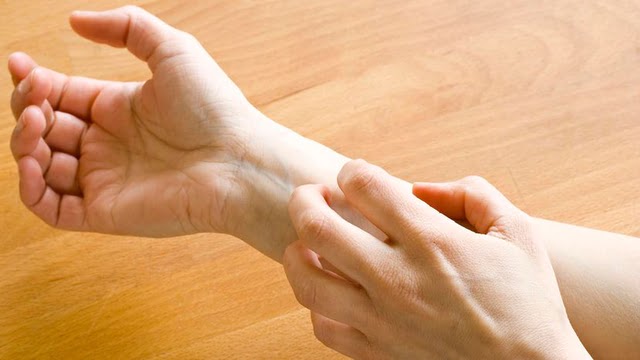Quck answer
Fleas are small, wingless parasites that feed on the blood of animals and humans. They use their powerful legs to jump from host to host and can transmit diseases and cause itching and irritation. Fleas have a unique mouthpart adapted for piercing skin and sucking blood, and their bodies are covered in spines and hair that help them cling to their hosts. Female fleas can lay hundreds of eggs in their lifetime, leading to rapid infestations. Flea control involves treating both the host and the environment, as fleas can survive on carpets, bedding, and furniture.
Wild Animals
Human Reactions to Flea Bites

Fleas can also bite humans, and the bites can be incredibly itchy. HeikeKampe/Getty Images
Considering the fact that fleas are capable of spreading diseases, and that having a pet increases the probability of a flea infestation, it is important to prevent fleas from entering your home through soft objects such as fabric or fur. Fleas reproduce quickly, so it’s crucial to keep them under control.
But how can you tell if you’ve been bitten by a flea? An allergic reaction may occur, resulting in swelling, itching, and small red spots in groups of three or four (or sometimes in a line) around your feet, ankles, or legs. Fleas can spread all over your body and bite you anywhere, particularly if you have dense hair on your legs and chest. Occasionally, hives and a rash may appear, and scratching can lead to an infection.
The most effective method of preventing the spread of fleas is to clean and vacuum floors, furniture, bedding, and skirting boards on a regular basis. However, when it comes to flea bites, humans are often secondary targets because they do not make good hosts.
Instead, people frequently become targets for hungry adult fleas who have not yet located the family pet or another, more suitable, host. An adult flea that has recently emerged from its cocoon may also feed on an adult or child who happens to be walking or crawling by.
If you are bitten by a flea, make sure to:
- Wash the bite.
- Use an antiseptic and apply an ice pack.
- Avoid scratching.
- Use lotions to alleviate itching.
- Speak with a pharmacist about over-the-counter anti-itch creams and antihistamines.
If you have trouble breathing, nausea, and swelling of the lips or face after being bitten, seek medical attention right away. If you have swollen glands, extreme pain around the bite site, excessive redness, or a white pocket or rash, you may have an infection. Fleas can transmit diseases through bites, such as flea-borne spotted fever, plague, typhus, and cat scratch fever, but these cases are uncommon.
FAQ
1. What are fleas?
Fleas are small, wingless insects that feed on the blood of mammals and birds. They are external parasites that can cause irritation, discomfort, and disease in their hosts.
2. How do fleas move?
Fleas have long, powerful legs that allow them to jump up to 150 times their own body length. They can also move quickly on their hosts, using their claws to cling to fur or feathers.
3. What do fleas eat?
As mentioned, fleas feed on the blood of mammals and birds. They use their sharp, needle-like mouthparts to pierce the skin of their host and suck blood.
4. How do fleas reproduce?
Fleas reproduce quickly and efficiently. Female fleas lay eggs on their host animal or in their environment, such as in carpet or bedding. The eggs hatch into larvae, which mature into pupae and then into adult fleas.
5. Can fleas transmit diseases?
Yes, fleas can transmit diseases to their hosts. Some of these diseases include typhus, plague, and cat scratch fever. Fleas can also cause allergic reactions in some animals.
6. How can I tell if my pet has fleas?
Some signs that your pet may have fleas include excessive scratching, biting at the skin, and the presence of small, reddish-brown insects on their fur. You may also notice flea dirt, which looks like small black specks on your pet’s skin or in their bedding.
7. How can I prevent my pet from getting fleas?
To prevent fleas, it’s important to keep your pet clean and groomed. You can also use flea preventatives, such as flea collars, topical treatments, and oral medications. Regularly washing your pet’s bedding and vacuuming your home can also help prevent fleas.
8. Can humans get fleas?
Yes, humans can get fleas, although it is relatively rare. If you come into contact with a flea-infested animal or environment, you may experience itching and irritation. However, fleas cannot live on humans long-term and will eventually die off.
9. How do I get rid of fleas in my home?
To get rid of fleas in your home, you will need to treat both your pets and your environment. This may include using flea shampoos or medications on your pet, vacuuming regularly, washing bedding and linens in hot water, and using flea sprays or foggers in your home.
10. Can fleas live in cold weather?
Fleas prefer warm, humid environments and are most active in the summer months. However, fleas can survive in colder temperatures as well, and may enter a dormant state during the winter months.
11. How long do fleas live?
The lifespan of a flea varies depending on its environment and host. Adult fleas can live up to several months on a host animal, while off of a host, they may only survive a few days to a few weeks.
12. Can I treat my pet for fleas myself, or should I see a veterinarian?
There are a variety of over-the-counter flea treatments available for pets, including shampoos, sprays, and topical medications. However, it is always best to consult with a veterinarian to determine the best course of treatment for your pet’s specific needs.





Leave a Reply